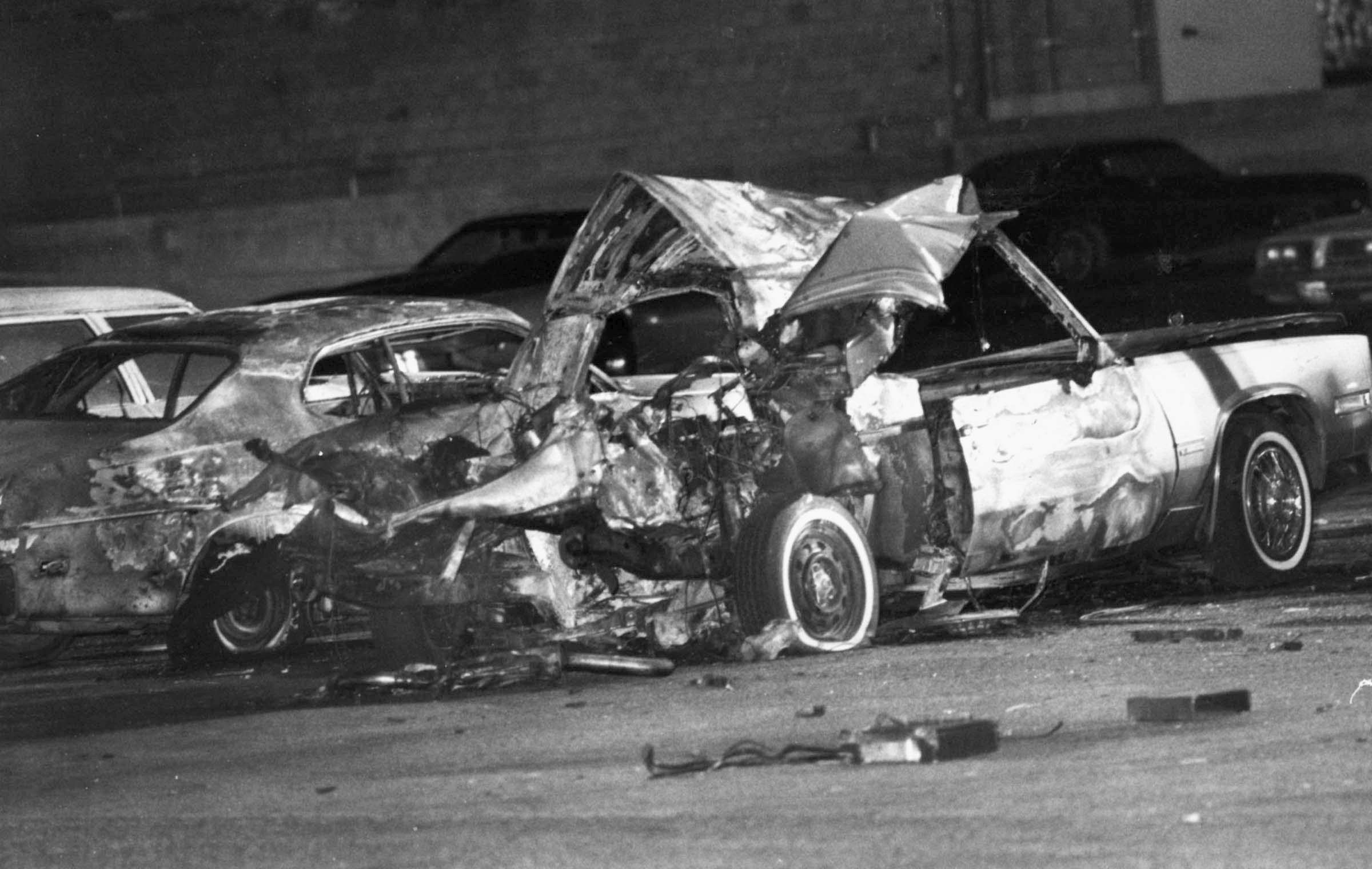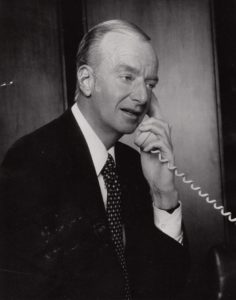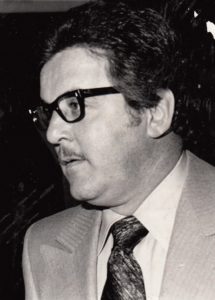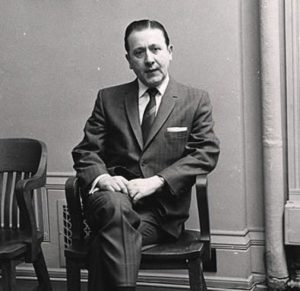
Who bombed Frank “Lefty” Rosenthal’s car?
Midwestern mobsters are viewed as key suspects in enduring 1982 mystery

Flames two or three inches high emerged from the defroster vent as he sat in his car with takeout food in the parking lot of Tony Roma’s restaurant on East Sahara Avenue in Las Vegas.
That was the first thing Frank “Lefty” Rosenthal saw, according to what he told author Nicholas Pileggi. The flames were reflected on the interior windshield. Rosenthal asked himself, “Why is my car on fire?”
As Rosenthal struggled with the door to get out, the car filled with sheets of flame, and a strong jolt might have thrown him against the steering wheel, hurting his ribs, but he couldn’t remember any of that. Outside the car, with his clothes on fire, he rolled on the ground to snuff out the flames. Two men assisted him as the car’s gas tank ignited, causing an explosion “like an atom bomb.” Rosenthal saw the 4,000-pound Cadillac Eldorado jump a few feet, flames shooting through the roof two stories high.
“That’s when I realized for the first time it hadn’t been an accident,” he told Pileggi. “That’s when I knew somebody put a bomb in my car.”

Today, authorities still do not know who planted the bomb that blew up Rosenthal’s car on October 4, 1982. Investigators speculated his life was saved because the 1981 model of that car had a steel stabilizing plate beneath the driver’s seat, which deflected the blast.
Along with uncertainty over who killed Benjamin “Bugsy” Siegel in 1947 and the 1975 disappearance of labor leader Jimmy Hoffa, the Rosenthal car bombing remains one of the top unsolved organized crime mysteries in the country. The car bombing came up during a panel discussion at The Mob Museum in 2017. The discussion can be viewed here.
This year, the Rosenthal incident is back in the public eye with the 25th anniversary of the movie Casino, based on Pileggi’s 1995 nonfiction book, Casino: Love and Honor in Las Vegas.
Rosenthal’s description of what happened that October night is detailed in the book and depicted in the movie, which Pileggi co-wrote with director Martin Scorsese. For the movie, the characters were given fictional names to avoid legal difficulties, though their real names are used in the book. Robert De Niro stars in the movie as Ace Rothstein, the character based on Rosenthal.
Rosenthal, a Chicago Mob associate, ran the now-demolished Stardust hotel-casino on the Las Vegas Strip for Midwestern crime families that received untaxed gambling revenue skimmed from there and other resorts. The Stardust and other Argent Corp. properties — the Fremont, Hacienda and Marina — were owned by San Diego businessman Allen Glick, but Mob bosses who helped Glick secure Teamsters Union loans installed Rosenthal to run things.
That era, punctuated by the car bombing, resulted in several Midwestern mobsters being imprisoned a few years later in casino skimming trials.
Several theories have surfaced regarding who tried to kill Rosenthal. The most prominent is that it was the work of mobster Anthony “Tough Tony” Spilotro, who, like Frank Rosenthal, was an underworld transplant from Chicago. Spilotro also was having an affair with Lefty’s wife, Geri.

Another theory pins the crime on the outlaw bikers Geri Rosenthal knew in Southern California during a downward spiral that resulted in her apparent drug overdose death there at age 46 a month after the car bombing. In the movie, Sharon Stone plays the Geri Rosenthal character, while Joe Pesci portrays the character based on Spilotro. Spilotro and his brother, Michael, were beaten to death in 1986 and buried in an Indiana cornfield.
Another suspect in the car bombing is former Milwaukee crime boss Frank “Mad Bomber” Balistrieri. A History Channel publication released in 2020 titled The American Mafia states that “most evidence” points to Balistrieri. According to the publication, Balistrieri blamed Rosenthal for the Chicago Outfit’s demand that he “surrender 25 percent of the take from his skimming operation.”
Some who were around in those days view it differently, believing Kansas City mobsters were responsible for the bombing. Frank Cullotta, a Chicagoan who reconnected with childhood pal Spilotro in Las Vegas in the 1970s, becoming his Mob lieutenant in town, said in a recent telephone interview that the Kansas City Mafia suspected Rosenthal of being a government informant and therefore wanted to take him down.
Las Vegas Review-Journal reporter Jane Ann Morrison later confirmed through her law enforcement sources what some mobsters sensed, that Rosenthal had been a Top Echelon federal informant. Morrison even discovered that Geri Rosenthal also talked to the FBI.
Frank Rosenthal’s involvement as an informant went back a long time, according to what Pileggi said over the telephone recently from his Manhattan apartment. The screenwriter said Frank Rosenthal likely had been a Top Echelon informant as far back as his Chicago years, when he was a prominent oddsmaker. When the Mob finally learns that about someone, arrangements are made to silence the person.
“Once you are a Top Echelon informant, you are a target,” Pileggi said, adding that mobsters from somewhere in the Midwest — Cleveland, Chicago, Milwaukee, Kansas City — probably were responsible for trying to kill Rosenthal with the car bomb.
Unlike others from that period, Rosenthal never was held criminally responsible for the widespread skimming that took place then. He moved away from Las Vegas not long after the bombing, first to California, then to Florida, where he offered sports-betting advice on his own website before dying in 2008 of an apparent heart attack at age 79.
Cullotta said the Kansas City crime family, led by Nick Civella, adhered to omertà, the Mafia code of silence. In their world, people who talked had to be dealt with.
“These guys were tough,” Cullotta said of the Kansas City family. Cullotta was somewhat familiar with Kansas City, having participated in a couple of jewelry store heists in town with Spilotro and Chicago mobster Vincent “The Saint” Inserro, scoring about $70,000 in stolen goods, he said.
Cullotta and a burglary crew called the Hole in the Wall Gang were captured in 1981 breaking into what was then Bertha’s Gifts and Home Furnishings on East Sahara, not far from where Rosenthal’s car would be firebombed the next year. (The Tony Roma’s restaurant later closed, becoming a Hustler Hollywood store, selling adult apparel and novelties.)

Believing he was targeted for death himself, Cullotta cooperated with the government and entered the federal Witness Protection Program. He spoke at length with Pileggi for the book and even briefly appeared in the movie as a Mafia hitman, a role he had taken on in real life. Cullotta now hosts a YouTube program titled Coffee With Cullotta.
Another who thinks the Kansas City Mob probably engineered the car bombing is Gary Jenkins, a former Kansas City Police Department intelligence detective now running Gangland Wire, a website about the Mafia.
Jenkins, named in Pileggi’s book as a local cop who investigated the Civella crime family back then, said Rosenthal not only was suspected of being an informant, but he was drawing attention to himself in Las Vegas. Rosenthal waged a public battle with state gaming regulators, including future U.S. Senator Harry Reid, and hosted a television show broadcast from the Stardust featuring celebrity guests such as Frank Sinatra. This public notoriety was jeopardizing the skim that enriched mobsters in the Midwest. Jenkins’ 2016 book Leaving Vegas includes wiretap transcripts of Kansas City mobsters expressing disappointment with Rosenthal’s high-profile antics.
“He was creating a stir,” Jenkins said in a recent telephone interview.
Jenkins noted that Kansas City during its Mob wars in the 1970s was known as a town where car bombings took place. Of the Rosenthal bombing, Jenkins said, “It fits the mold of what Kansas City was doing at that time.”
Jenkins is among those who doubt there will ever be an answer to who tried to kill Rosenthal. Most people who might have known probably are dead, he said.
Pileggi sees it the same way. There might be some aging, former federal agent who knows something, Pileggi said, but so far, nothing definitive has emerged, and each passing day closes the door a little more.
“The clock is running out,” Pileggi said.
Larry Henry is a veteran print and broadcast journalist. He served as press secretary for Nevada Governor Bob Miller, and was political editor at the Las Vegas Sun and managing editor at KFSM-TV, the CBS affiliate in Northwest Arkansas. Henry taught journalism at Haas Hall Academy in Bentonville, Arkansas, and now is the headmaster at the school’s campus in Rogers, Arkansas.
Feedback or questions? Email blog@themobmuseum.org





